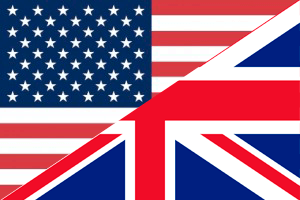Issue 79
Vápnthjófr saga- page 172
Stallo was a being in Sami folklore. He was a man-eating giant who wasn't vey bright, and stories of him are often about him being defeated by being outsmarted.
Issue 130
Vápnthjófr saga- page 223
Noaidis were sami schamans. The sami schaman drums were covered in symbols, and was used in rituals. The schaman would use it to read signs from the future or from other realms, or to get into a trance where their spirits could leave their bodies and travel between realms.
Issue 140
Vápnthjófr saga- page 233
In sami mythology, the world was believed to be made up of several different realms, (The mortal, the divine and the dead) and the schamans traveled between the realms as a means to communicate with gods or the dead. He was led by guardian spirits in the visits to those other realms.
Issue 160
Vápnthjófr saga- page 252
Freyr's island = Frösön. That island was named after Freyr. Lake storsjön also has a lake named after Njord.
Issue 167
Vápnthjófr saga- page 259
To translate some of the viking names for countries: Gårdarike is western Russia, Bretland is Britain and Särkland is the middle east. (Shirin probably personally calls it Persia, but she used the Särkland name here so the others will know what she refers to. And yes, there are pine martens in Iran)
Issue 239
Vápnthjófr saga- Page 333
The east coast she refers to is the so-called "High coast", a part of the Baltic coast of northern Sweden. It really is a lovely place, with steep cliffs and rocky forests. (Tip: If you visit sweden, go hiking in the Skuleskogen national park!)
Issue 297
Vápnthjófr saga: Page 390
During the Viking age, Freyr's sacred places were supposed to be free of violence. Fighting there were forbidden and you couldn't bring weapons either. (There were still sacrifices made for him, though, but in this setting animal sacrifice is of course not a thing)
Issue 301
Vápnthjófr saga: Page 394
Freyr was told to have a self-swinging sword. He lost it in Jotunheim while courting a jotun woman, though.
Issue 320
Vápnthjófr saga: Page 413
Rotaimo was the name for a sami death realm, ruled by Ruohtta, the god of disease, where people who didn't live according to the natural order ended up after death. This might be a later addition to the religion, however, influenced by the christian idea of hell (Cause the sami is one of many indigenous groups to be forced to convert to christianity...)
Issue 340
Vápnthjófr saga: Page 433
They're drinking the age-old scout classic: Pine needle tea. Sometimes it pays to have been in the scouts when you create comics!
Issue 351
Vápnthjófr saga: Page 444
Some mythological scenes are being depicted on the runestones: The first one is Odin hanging from the branches of Yggdrasil and recieving the runes, and second is Tor's final battle against the Midgård serpent in Ragnarök (Where they take out eachother)
Issue 557
Vápnthjófr saga: Page 647
The deity depicted here is Beaivi, the sami sun goddess and mother of humanity. In winter solstice, white female animals (usually reindeer) were sacrificed to her to bring her back (which is why I depicted here as a white reindeer-ptarmigan mix)
Issue 653
Vápnthjófr saga: Page 740
Ägir & Ran were two jotun gods, who ruled over the ocean: Ägir was the more benevolent of the two, and Rán represented the dangerous part of the ocean: She was the one who captured drowning people in her net and the people who died by drowning spend their afterlife in their realm.
Also: Here we see my depicitons of Ägir and Rán that i used in a bonus comic a few years ago!
Issue 859
Vápnthjófr saga: Page 947
Look who's back, some 900 pages later!
In case you forgot: Iron was often sold in that shape to show that it was good enough quality to bend.


 English
English





















































































































































































































































































































































































































































































































































































































































































































































































































































































